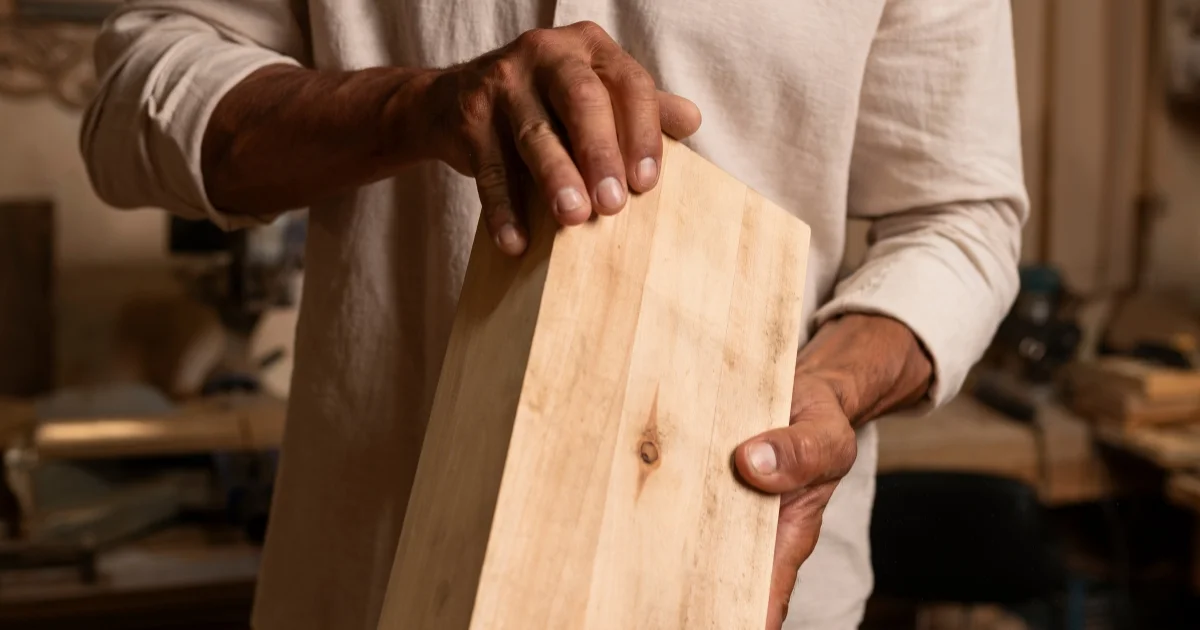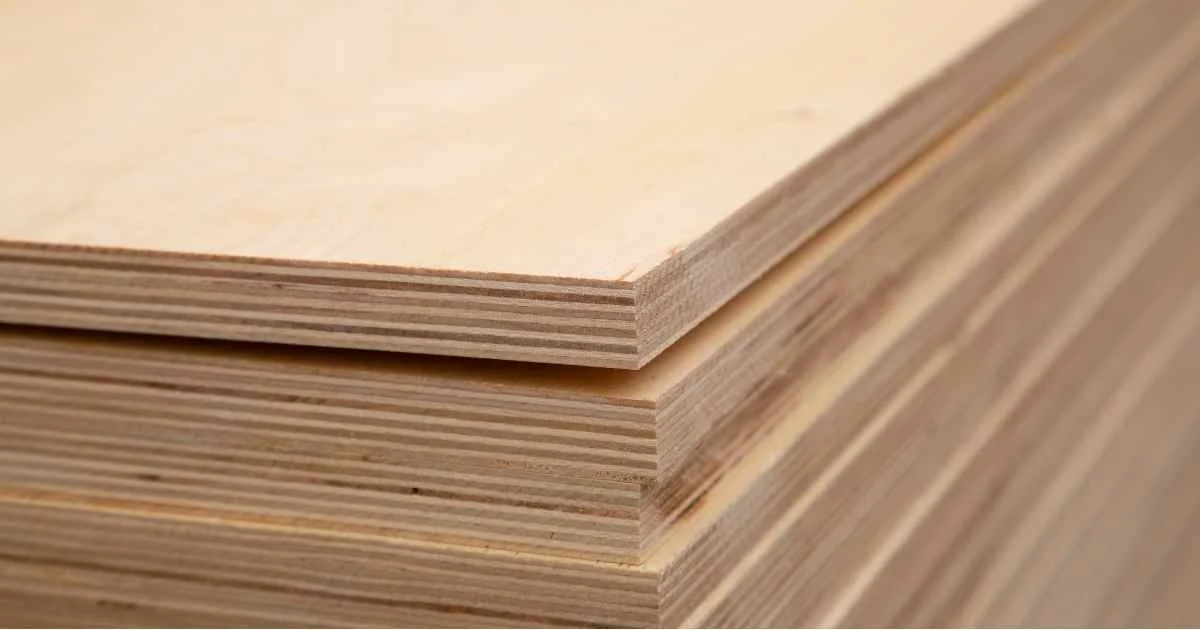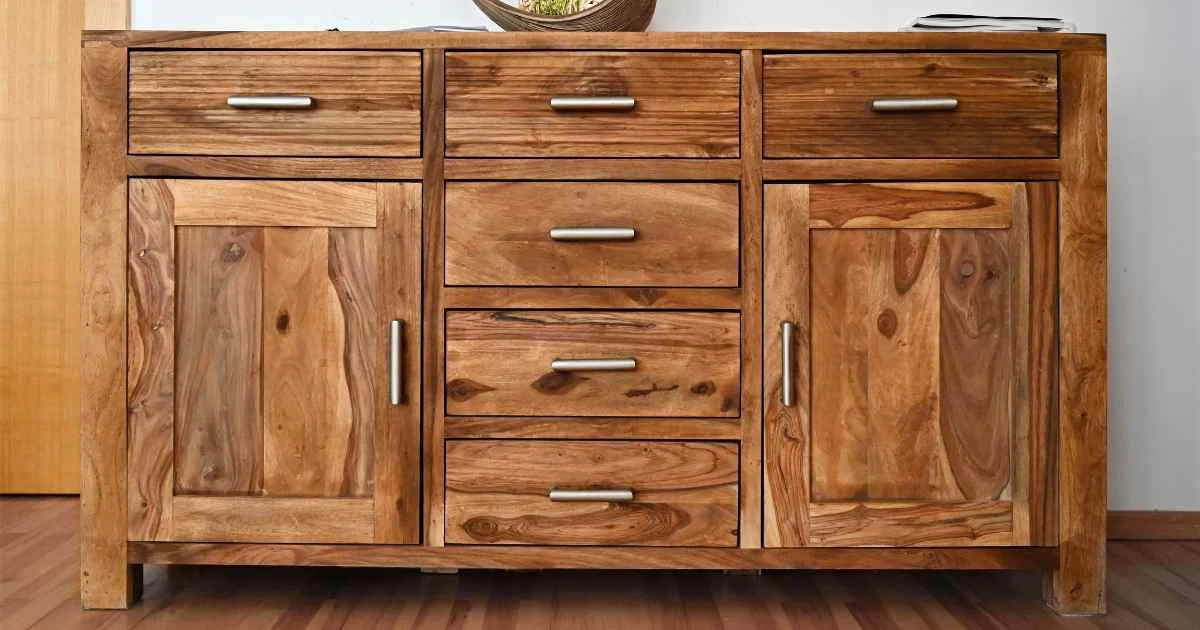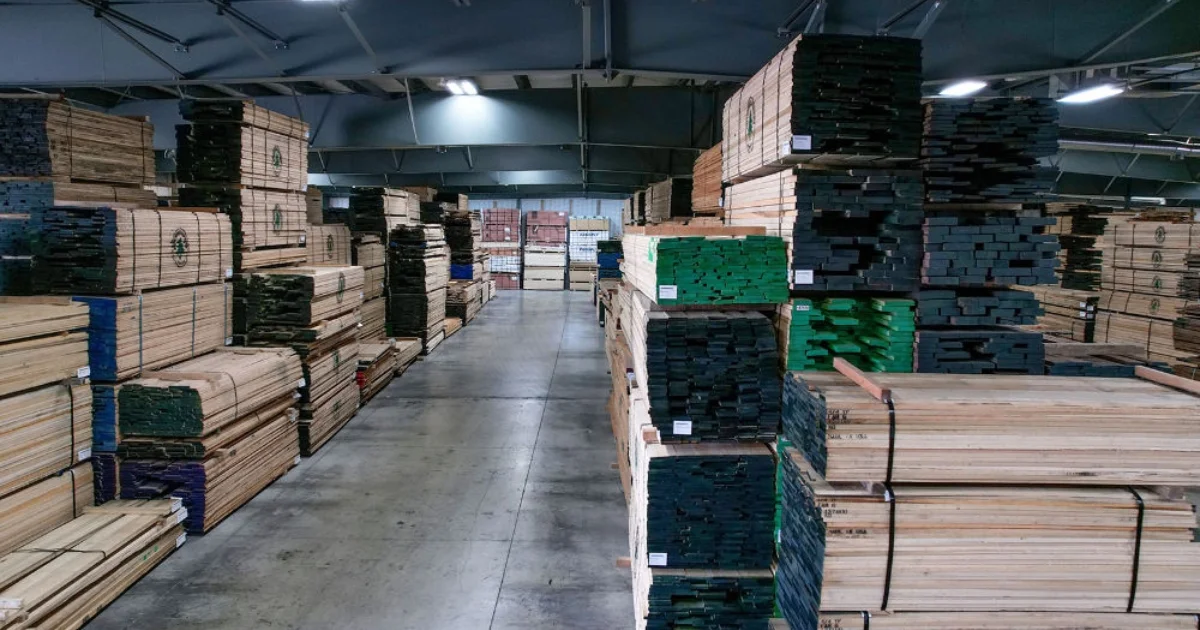Plywood vs. Solid Wood: Which is Best for Your Project?

The Bottom Line:
Before diving into your next woodworking project, let's break down what each material brings to the table.
Plywood offers key advantages:
Costs less than solid lumber
More stable in varying humidity
Maintains consistent strength across sheets
Comes in standard, easy-to-find sizes
Performs reliably in changing conditions
Solid wood brings its own strengths:
Shows unique, natural grain patterns
Can be refinished multiple times
Handles heavy use exceptionally well
Carries traditional craftsmanship appeal
Before making your choice, consider:
How the piece will be used
Your project budget
Where it will be installed
Expected lifespan
Environmental conditions
Often, the smartest approach combines both materials, using each one where its strengths matter most. Understanding these differences helps you make choices that lead to successful projects that look great and last long.
Plywood vs. Solid Wood
When it comes to woodworking, choosing between plywood and solid wood shapes everything that follows. Plywood combines layers of thin wood into stable sheets that resist warping and cover large areas efficiently. Solid wood, cut straight from logs, brings natural beauty and strength that can last for generations.
Understanding Plywood
Think of plywood like a sandwich made of wood layers. Each layer runs opposite to the ones next to it, creating strength in all directions. Manufacturers use strong glues to hold these layers together, helping panels stay flat even when humidity changes.
Different types serve different needs. Cabinet-grade plywood shows smooth faces perfect for furniture. Marine-grade stands up to moisture without falling apart. Construction grade offers good strength for basic building.
Plywood brings several advantages to your shop. Large sheets cover big areas with consistent thickness throughout. The layered construction helps it stay flat when regular wood might warp.
While it costs less than solid wood, plywood does have some drawbacks. You'll need to cover the edges where layers show, and you can't sand it too deeply without hitting the next layer. When surfaces crack, repairs prove trickier than with solid wood.

Understanding Solid Wood
Solid wood brings character to your projects through unique grain patterns and natural colours. Working with solid wood requires understanding its natural properties. Wood moves with seasonal changes in humidity, expanding and contracting across its width. This movement means you'll need to plan your joints and assemblies carefully. However, solid wood rewards this extra care with superior strength and the ability to be refinished multiple times.

The Choice Depends on Your Project
Smart woodworkers often combine both materials in a single project. Kitchen cabinets might use plywood for the boxes where stability matters most, while solid wood creates durable face frames and doors that people touch every day. Tables often feature solid wood tops that can be refinished when damaged, while hidden structural elements might use plywood to save money without sacrificing strength.
Pick your material based on how each piece will be used. Consider whether the wood will show in the final project, how much wear it needs to handle, and what conditions it will face. Match these needs with each material's strengths, and you'll create pieces that work well and last for years.
For more information on the qualities of specific woods like oak, check out our blog on Crafting with Oak.
Working with Each Material
Each material demands its own approach in the workshop. Plywood requires special care during cutting to keep those thin face veneers looking good. You'll want razor-sharp blades on your table saw – standard blades can tear up the edges pretty badly. Most pros recommend special plywood-cutting blades that reduce splintering.
A good trick is to always cut with the best-looking face up, which helps prevent the bottom layer from getting ragged. Solid wood plays by different rules. Unlike plywood, it's going to move with the seasons as humidity changes – that's just wood being wood. This means paying attention to grain direction when you're planning cuts and joints.
The nice thing about solid wood is how well it works with hand tools. Run a sharp plane across solid wood, and it'll leave a surface that practically glows. Try that with plywood, and you'll just tear through the veneer. When it comes to joining pieces together, each material needs its own approach.
Plywood works great with screws; Solid wood opens up more traditional options. Mortise and tenon joints or dovetails might take longer to make, but they actually get stronger over time as the wood moves naturally. These classic joints have been proving themselves for centuries.
Key Comparisons Between Plywood and Solid Wood
Performance differences show up clearly in use. Plywood maintains consistent strength across large areas and handles moisture better than solid wood. It stays more stable in changing conditions, making it ideal for areas with varying humidity. Solid wood excels in pieces that get heavy use, like table tops and chair parts. It allows repairs that can keep it looking good for generations.
Cost Considerations
The price difference between plywood and solid wood affects every project's bottom line, especially for large areas. This initial savings makes plywood attractive for bigger projects.
Choosing the Right Material
The material you choose should align with your project’s purpose. Ask yourself: Will the wood be on display? How much wear and tear will it face? For hidden parts, plywood can be a cost-effective option, allowing you to save solid wood for visible areas that need durability and aesthetic appeal.
Also, consider the lifespan of your project. Plywood is great for shorter-term needs, while solid wood is ideal for heirloom pieces meant to last generations. Location is another key factor. Plywood performs better in areas with fluctuating conditions, making it a smart choice for kitchens or bathrooms where moisture levels change frequently.
Solid wood, on the other hand, thrives in more stable environments but can still withstand tough conditions with proper care and maintenance. Finally, achieving a polished finish depends on proper machining techniques, especially with solid wood. For expert tips on creating smooth, professional results, check out Machining Wood: Tips and Tricks for a Smooth Finish.

Budget Planning
Smart planning helps control costs without cutting quality. For plywood projects, buying full sheets often saves money even if you have some waste. With solid wood, buying rough lumber and milling it yourself costs less but requires more tools and time.
Hidden costs affect your total project price. Quality blades for cutting plywood add to your costs, while solid wood often needs more clamps and special tools for joinery. Both materials need finishing products, though solid wood typically requires more extensive finishing. Plan for these extra costs when budgeting.
Practical Examples
Kitchen cabinets show how both materials work together well. Cabinet boxes use plywood because they need to stay flat and stable. Face frames and doors often use solid wood since people see and touch them daily. This mix gives you the best of both materials while controlling costs.
Tables demonstrate why material choice matters so much. Tabletops made from solid wood can take sanding and refinishing when they get damaged. The base might use plywood in hidden spots to save money without losing strength. Chairs almost always need solid wood because they take so much stress.
Storage projects like closets and garage cabinets usually work best with plywood. It comes in big sheets that make building boxes easy, and it stays flat even when temperatures change. Adding solid wood edges makes them look better and protects the plywood edges from damage.
Finding the Right Fit for Your Project
Both materials have their advantages, and many great projects actually use a combination of the two. Plywood gives you cost-effective stability, while solid wood brings lasting beauty and strength. Smart material choices go a long way toward project success, whether you're watching your budget, focused on function, or aiming for that perfect look.
Getting a project that lasts (and looks great) comes down to using the right material in the right place. Plywood works wonders for structural parts, while solid wood really shines where you can see and touch it. Mix them thoughtfully, and you'll get the best of both worlds.
Ready to start your next woodworking project? Come by our showroom and get your hands on our plywood and solid wood options. Our team knows these materials inside and out and can help you pick what works best for your needs.
We keep a solid stock of different grades and species for all kinds of projects. Drop in or give us a call – we're here to help you build something that lasts.


